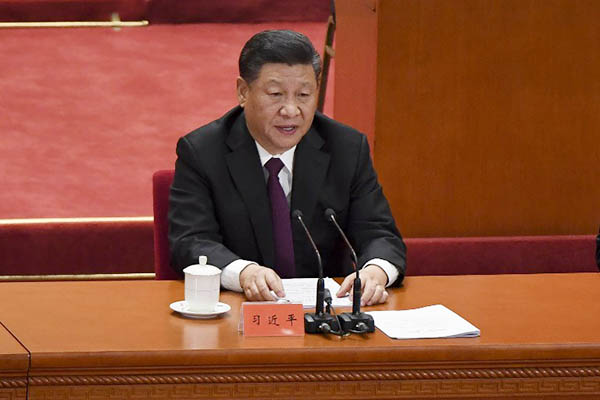
Chinese President Xi Jinping. Wang Zhao—AFP
China’s recent entry into the “power square” of the Gulf has inaugurated a new policy of “taking sides” that was so unpleasant to Beijing in the past. In a joint statement from Dec. 9, China, Saudi Arabia and other Gulf Cooperation Council (GCC) members branded Iran “a supporter of regional terrorist organizations” and called on participants “to address the Iranian nuclear and destabilizing regional activities, Iran’s support for terrorist and sectarian groups and illegal armed organizations, to prevent the proliferation of ballistic missiles and drones, ensure the safety of international navigation and oil installations, and adhere to U.N. resolutions and international legitimacy.”
The Arabs, in the statement, supported China in the deeply polarized Indo-Pacific region, saying “that Taiwan is an integral part of Chinese territory,” rejecting its “independence” in all forms, and supporting the Chinese position on Hong Kong and supporting “the People’s Republic of China’s efforts to maintain national security and develop and perfect democracy in Hong Kong within the framework of one country, two systems.” China also supported the U.A.E’s claim to three islands held by Iran in the Gulf.
Is China abandoning Iran to secure an upper hand in the Gulf, further consolidating its acknowledged influence in the Middle East and the African continent? In 2014, then-U.S. president Barack Obama had complained that China was a “free rider” in the Persian Gulf, allowing Washington to bear the cost of a blue-water fleet that protected its oil supplies. Things have changed in the region since then but China’s presence is still modest compared to the U.S. Yet the “encroachment” in the eyes of the U.S. will become pronounced in future political exchanges.
At present, Chinese presence in the region is still modest. Despite dramatically increasing its military spending, Beijing only has one small base in the region, at Djibouti, staffed with only 200 marines. But why is China damaging its ties with Iran to boost its standing with the Arabs? It seems China has realistically calculated the chances of success of Iran’s “medievalist” worldview and decided to shift its regional focus. As a consequence, China’s economic relations with Iran have gradually dried up as its ties with Arabs and Turkey advance. China’s exports to Turkey jumped to $3.5 billion a month in October, from just $1.5 billion before the COVID-19 pandemic. Being an influential force in Central Asia, Turkey can facilitate Beijing’s advances there.
China’s primary concern is Afghanistan and the potential for a dubious “Islamic” rejuvenation in the Central Asian states. In 2021, the Taliban returned to power in what is now the Islamic Emirate of Afghanistan. This has triggered a worsening humanitarian crisis exacerbated by the risk of terrorist organizations using the country as a springboard for violent actions elsewhere. The threat posed by the Islamic State in Khorasan, which explicitly incites attacks on Chinese targets, is what China hopes to forestall by fortifying Central Asia’s resistance to a medieval seduction exercised by the Taliban.
